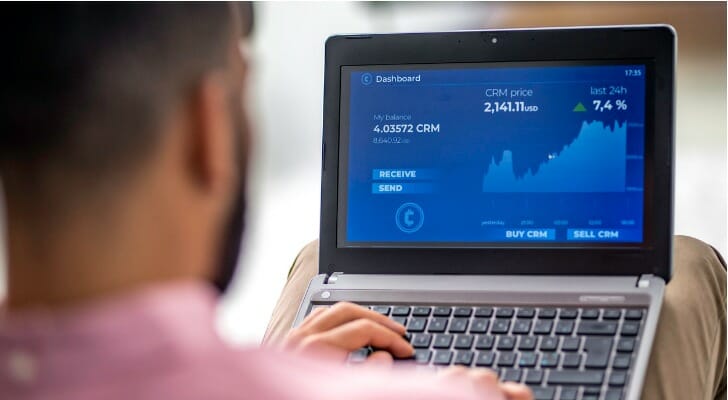A put option allows investors to bet against the future of a company or index. More specifically, it gives the owner of an option contract the ability to sell at a specified price any time before a certain date. Put options are a great way to hedge against market declines, but they, like all investments, come with a bit of risk. For starters, you can lose not only what you invested, but also any chance for profits.
A financial advisor could help you answer questions about put options and create a financial plan for your needs and goals. Connect with your advisor matches today.
What Is a Put Option?
Buying a put option gives you the right to sell a stock at a certain price (known as the strike price) any time before a certain date. This means you can require whoever sold you the put option (known as the writer) to pay you the strike price for the stock at any point before the time expires. However, you are under no obligation to do so.
Buying put options is a way to hedge against a potential drop in share price. They could also reap profits from bear markets or declines in the prices of individual stocks.
You should also understand the risks associated with put option investing, though. Because options are derivatives, they receive their value through underlying security. This reliance on other securities makes options generally more complicated and risky than investors who focus on individual securities, like stocks and bonds.
Depending on the type of derivative, your losses could be much more than the amount you’ve invested. In the worst-case scenario, losses for some derivatives can be nearly limitless, so tread lightly.
What’s an Example of How to Use a Put Option?
One of the main uses for a put option is to hedge against a possible drop in your portfolio’s security values. For instance, let’s say you own 100 shares of a stock valued at $100 per share. You become concerned that the stock could fall to $90 over the next three months.
What you can then do is buy a put option, which gives you the right to sell the 100 shares at a strike price of $100 at a time over the next three months. Since you own the shares, this is called a covered option.
Option prices vary, but say this one costs $2 per share. That’s $200 for a standard lot of 100 shares. But if the stock falls to $90 or lower during the three-month period, you could require the writer of the option to buy your shares for $100 each. This would prevent you from losing any more than the $200 cost of the option.
If the three months pass without the shares falling below $100, you would let the option expire without exercising it. You would have spent $200 without gaining anything, but you will have insured yourself against losses.
How to Buy Put Options

To buy put options, you have to open an account with an options broker. The broker will then assign you a trading level. That limits the type of trade you can make based on your experience, financial resources and risk tolerance.
To buy a put option, follow these four steps:
- Choose the strike price: This will normally be somewhat below where the stock is currently trading.
- Choose an expiration date: This could typically be from a month to a year in the future. Longer time periods generally mean less risk.
- Decide how many contracts to buy: Each option contract is for 100 shares of stock. For each contract, you will pay the listed premium for that option, plus brokerage fees.
- Exercise your option when the timing is right: After paying, watch stock prices to see if it’s time to exercise the option. You can exercise the option at any time before the expiration date. If current prices fall below the strike price, the option is considered in the money. If your option is on the money, you can require the writer of the option to purchase your shares at the higher strike price.
Should the stock price not decline, you can let the option expire. You won’t make anything but your losses will be limited to the option costs and fees.
Buying Uncovered Put Options
You can also buy put options for shares you don’t own. But you have to buy the shares before exercising the that uncovered put option. You can buy put options on indexes as well as individual securities. This can produce profits from broad declines in bear markets.
If the price of the optioned shares in the earlier example fell to $90, the buyer of an uncovered put option could still require the writer to purchase 100 shares for $100 each. First, he or she would purchase the shares for $90 each. After paying the $200 option premium, this put option would earn $800.
Of course, the share prices might not decline below the strike price. Then the put option buyer would let the option expire unused. The $200 would have been spent for no gain.
Buying uncovered put options gives an investor lots of leverage. In this example, the investor controls shares worth $10,000 at a cost of only $200. That $200 is also all the investor has at risk.
However, the profit potential in this example is as high as $10,000, or $9,800 after the $200 option premium, should the shares drop to zero in value.
Call Option vs. Put Option: What’s the Difference?
While put options provide the right to sell an underlying asset at a specific price, call options give the buyer the right to purchase an asset at a predetermined strike price before the contract’s expiration date. The key difference lies in their purpose: call options are generally used to profit from rising prices, whereas put options are a tool for hedging against declines or speculating on bearish trends.
For example, an investor who expects a stock to increase in value might purchase a call option to lock in a lower purchase price, amplifying potential gains with minimal upfront costs. In contrast, an investor concerned about a stock’s price dropping might buy a put option to protect against losses or profit from the decline.
Both options involve premiums, which represent the cost of the contract. If the anticipated price movement doesn’t materialize, buyers of both call and put options risk losing the premium paid.
Bottom Line

Buying put options can be a simple and less risky way to trade options. Put options can hedge portfolios and produce profit during falling markets. But it’s important to learn how they work and make sure you can withstand losses before buying put options. As happened with lots of investors during the January 2021 Gamestop craze, put options can cause big losses if the market does behave as you expected.
If you aren’t sure what trading level you’d meet or how much risk you’re willing to take on, it may be time to talk to a financial professional. They can help you figure out those details and weigh the benefits and risks of put options against similar alternatives.
Investing Tips
- Do put options belong in your portfolio? A financial advisor can help you figure that out. Finding a qualified financial advisor doesn’t have to be hard. SmartAsset’s free tool matches you with up to three vetted financial advisors who serve your area, and you can have a free introductory call with your advisor matches to decide which one you feel is right for you. If you’re ready to find an advisor who can help you achieve your financial goals, get started now.
- Options trading can result in significant gains or losses, so managing risk is crucial. Invest only what you can afford to lose, diversify your portfolio and set clear limits on your trades. Consider using stop-loss orders or setting maximum loss thresholds to protect against unexpected market movements. Additionally, avoid overleveraging, as it can amplify losses as much as potential gains.
Photo credit: ©iStock.com/woraput, ©iStock.com/vm, ©iStock.com/damircudic
